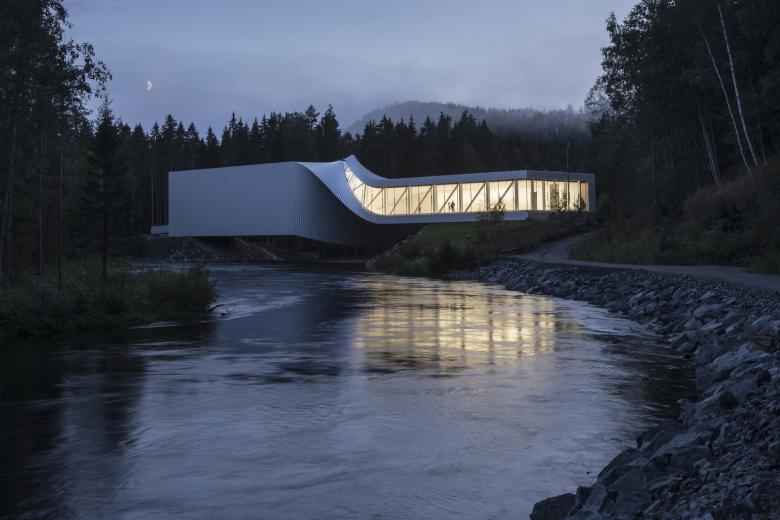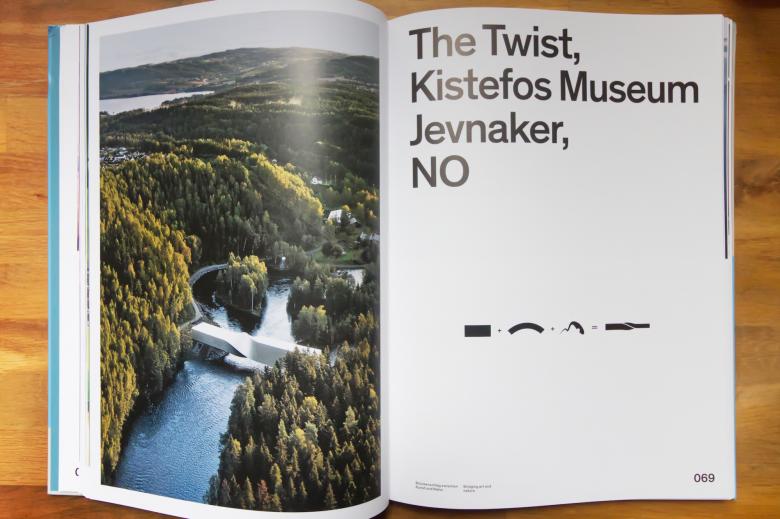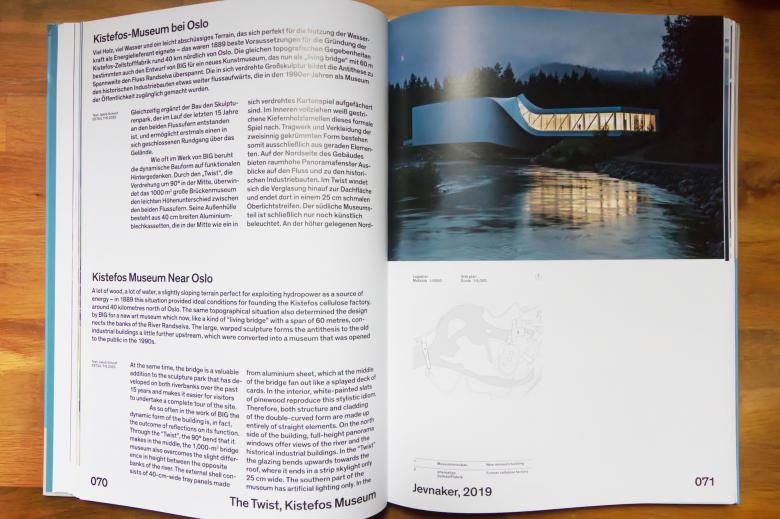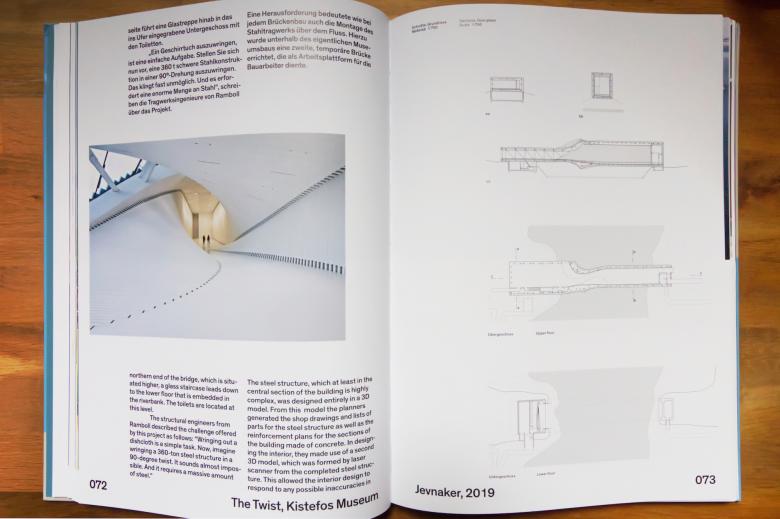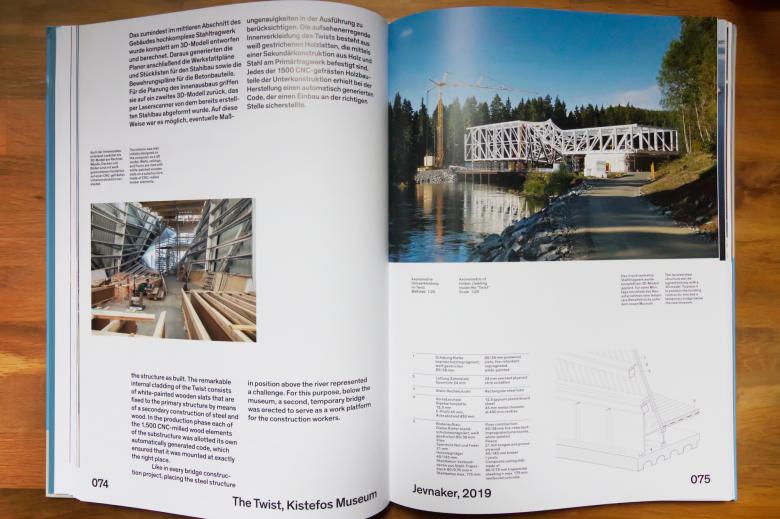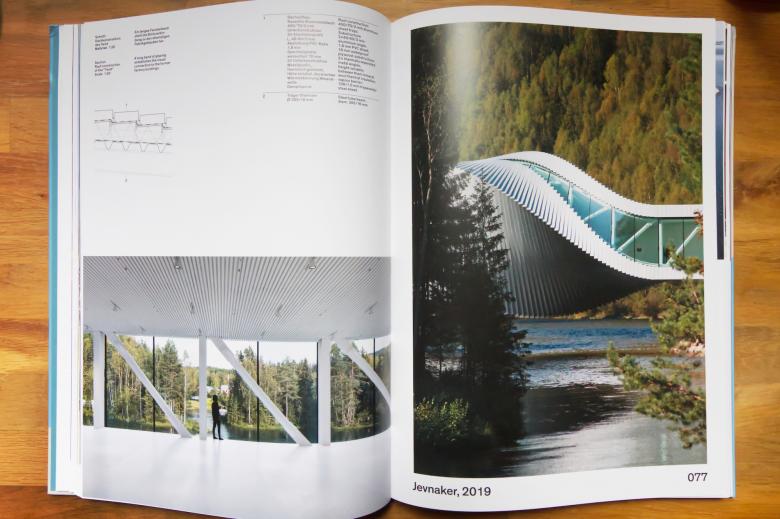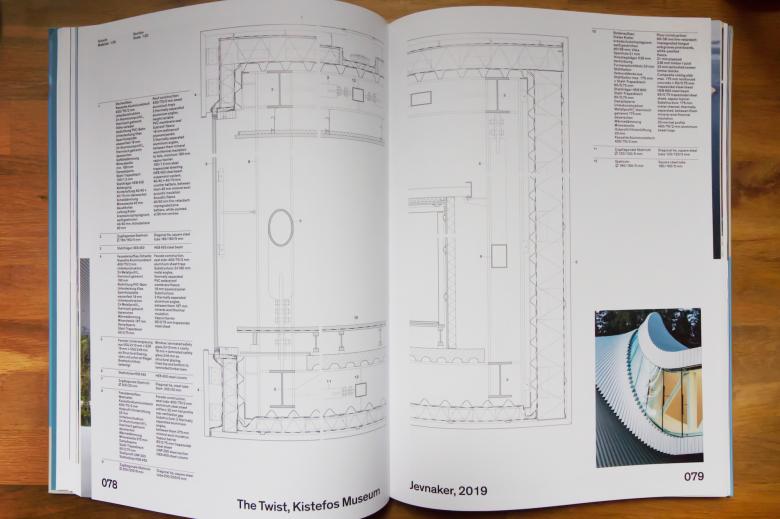BIG's 'Pragmatic Utopias' in Detail
John Hill
17. 六月 2022
The Twist in Jevnaker, Norway, 2019. (Photo: Laurian Ghinitoiu)
One of the latest titles in Detail's "Architecture and Construction Details" series is devoted to BIG – Bjarke Ingels Group, the 17-year-old firm that was founded in Copenhagen but now has 500 employees in five offices around the world. World-Architects takes a look inside its pages.
In the introduction to Detail's new book featuring twenty completed buildings by BIG – Bjarke Ingels Group, editor Sandra Hofmeister asserts that since Bjarke Ingels founded the studio in 2005 it has completed 55 projects worldwide. Therefore, the twenty projects — in reverse chronological order in the book, from the just-opened The Plus in the forests of Norway to The Mountain, completed in Copenhagen in 2008 and therefore one of the first buildings bearing the BIG name — are just a taste of BIG's output, especially if one takes into account the dozens of projects around the world that are currently under construction.
The selection of projects in BIG: Architecture and Construction Details manages to capture the broad spectrum of projects BIG has realized, in terms of typology, geography, and size. BIG is unique and therefore aptly named in that, instead of starting small, with interiors and houses, and then working toward larger commissions, the early Danish housing at the back of the book is as large as, for example, the more recent VIA 57 West in New York City and Shenzhen Energy HQ in China. Small projects are peppered throughout, with standouts including the Audemars Piguet Museum in Switzerland and The Twist at Kistefos Sculpture Park in Norway, whose pages are used here to illustrate the larger book.
Photo: John Hill/World-Architects
BIG's is not the first "Architecture and Construction Details" book published by Detail, the Munich publisher that turned 60 last year. Other titles in the series are devoted to Renzo Piano Building Workshop (2018), OMA – Office for Metropolitan Architecture (2019), Sauerbruch Hutton (2019), Snøhetta (2020), Herzog & de Meuron (2021), and David Chipperfield Architects (2022). All are famous names, with a not-unexpected focus on Western Europe. The books have a similar format to Detail magazine itself, with a strong focus on the documentation of projects through consistently drawn and keyed detail drawings — which are what readers of Detail expect.
Photo: John Hill/World-Architects
Unfortunately, I realized quickly when flipping through BIG: Architecture and Construction Details that only a fraction of the projects are given the "full Detail" treatment, in which wall sections accompany the usual plans and diagrams: 7 of 20, to be precise. This means that a project such as CopenHill, the much praised and extremely popular waste-to-energy plant (yes, a popular power plant) in Copenhagen, does not have drawings depicting the detailing of the checkerboard facade, the steel structure that sits behind it, nor the rooftop ski slope that has made the building such a draw and also a brilliant example of Bjarke Ingels's vision of "hedonistic sustainability."
Photo: John Hill/World-Architects
So, what are the seven projects? In addition to The Twist, whose spreads here clearly show it as one them, the list includes: The Plus, a furniture factory structured in glulam; Audemars Piguet, the spiraling museum with glass walls shaded by CNC-milled brass sunshades; the Aarhus Residences, whose angular balconies and other elements are documented in drawings and construction photographs; 79&Park, a wood-clad courtyard apartment building in Stockholm; the Danish Maritime Museum, which creatively occupies a former dry dock near Kronborg Castle; and The Mountain, which brought Bjarke Ingels and BIG so much attention back in 2008.
Photo: John Hill/World-Architects
The thorough documentation of these seven projects in drawings, photos, diagrams, and words is most welcome, though this reviewer would have loved to see the same treatment extended to CopenHill, but also VIA 57 West, NOMA 2.0, and LEGO House. Although the last is not included in this monograph, detailed drawings would answer any queries as to whether it was built with giant LEGO bricks or not. Kidding aside, BIG actually mounted an exhibition at the Storefront for Art and Architecture in 2007 that famously included a 250,000-piece LEGO model inhabited by 1,000 LEGO people. Whether or not BIG's embrace of LEGO informs the design of buildings that are modular, terraced, mountain-like and occasionally twisting, their designs — be they presented as LEGO models or not — eventually have to be engineered, built out of wood, metal and other materials, and made watertight. And that is where the value of Detail's documentation is found: revealing the corrugated metal, steel tubes, and other materials and assemblies that turned the diagrammatic Twist, for example, into a real building.
Photo: John Hill/World-Architects
Closing the book is "Science Fiction Will Soon Become Reality!," a conversation Detail editor Sandra Hofmeister and journalist Frank Kaltenbach had with BIG partners Bjarke Ingels and Kai-Uwe Bergmann. Standing out is some talk about "pragmatic utopia," which has echoes of "hedonistic sustainability" and refers to a more realistic and "credible" view of utopia combining with a more "ideal" pragmatism. The two oxymoronic phrases seem to embody BIG's way of finding compromise between otherwise divergent ideas and convincing clients used to one extreme to take a chance on the firm, but BIG's pragmatic utopia also finds expression in the pages of this book. After all, what is the built version of The Twist but a compromise between an idealized diagram, on the one hand, and natural forces, material suppliers, construction tolerances and the like, on the other? The thoroughgoing documentation in the pages of BIG: Architecture and Construction Details reveals those necessary compromises — the same compromises every architect takes when moving a project from design to reality.
Photo: John Hill/World-Architects

BIG: Architecture and Construction Details
Edited by Sandra Hofmeister
German/English
32 x 23 cm
192 页
Hardcover
ISBN 9783955535674
Edition DETAIL
Purchase this book
